What is Tobiko and Tobiko Sushi
on Dec 14, 2022, Updated Nov 21, 2023
This post may contain affiliate links. Please read my disclosure policy.
Tobiko is the Japanese word for flying fish roe, which is crunchy and salty with a hint of smoke. It’s a popular ingredient in Japanese cuisine as a garnish to sushi rolls.
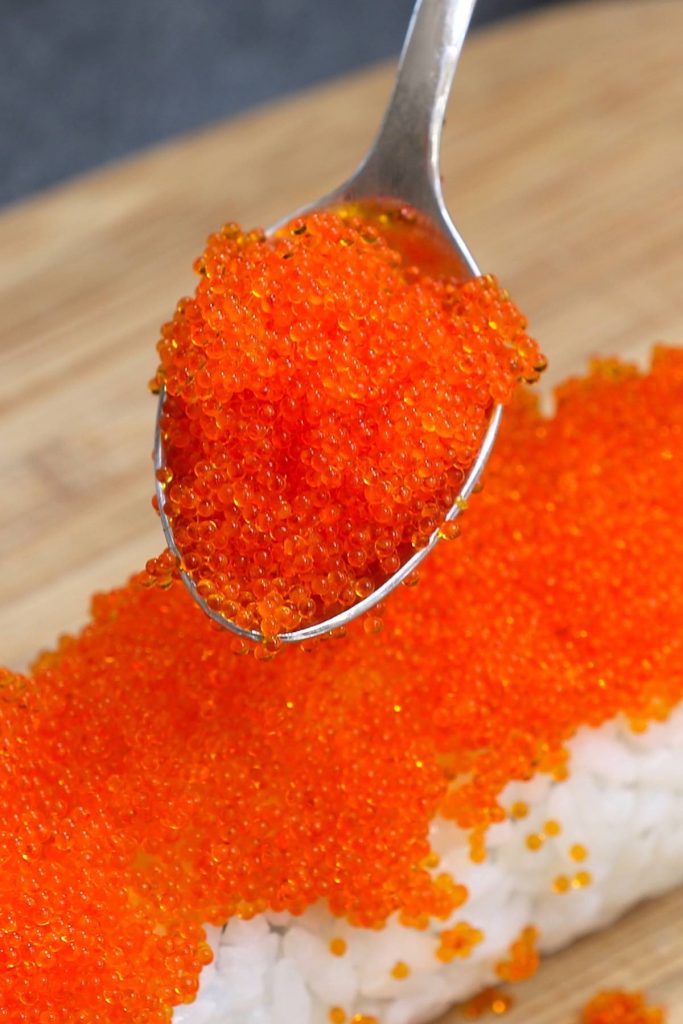
What is tobiko (flying fish roe)?
You’ve probably noticed that there are some bright-colored stuff sitting on top of some Japanese sashimi or sushi rolls at restaurant or supermarket. Most of the time, these are tobiko eggs or flying fish roe.
Tobiko eggs are small, pearl-like blobs that range from 0.5 to 0.8 mm in diameter. Natural tobiko has a red-orange color, but it can easily take on the color of another ingredient to become green, black or other colors.
Tobiko is larger than masago or capelin roe, and smaller than ikura, which is salmon roe. It’s often used in sashimi, maki or other Japanese fish dishes.
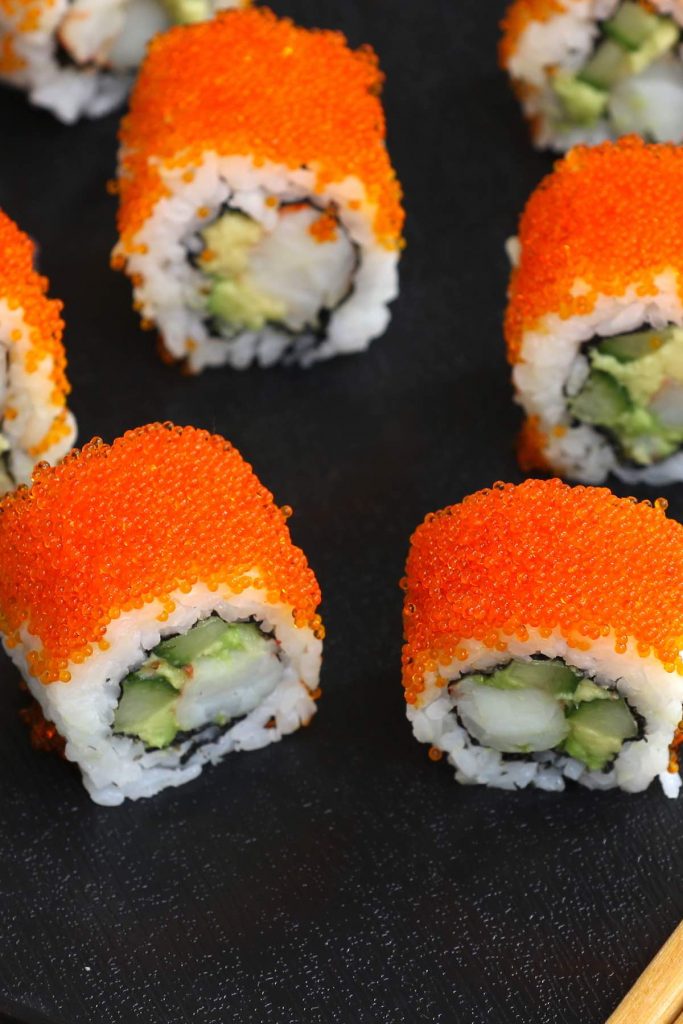
What does tobiko taste like?
It has a mild smoky and salty taste and slightly sweeter than other types of roe. With a crunchy but soft texture, it complements rice and fish very well. It’s quite satisfying of biting into tobiko garnished sushi rolls.
Tobiko’s Nutrition value
Tobiko is a good source of proteins, omega-3 fatty acids, and selenium, a mineral responsible for the production of antioxidants. However, due to its high levels of cholesterol, it should be taken in moderation.
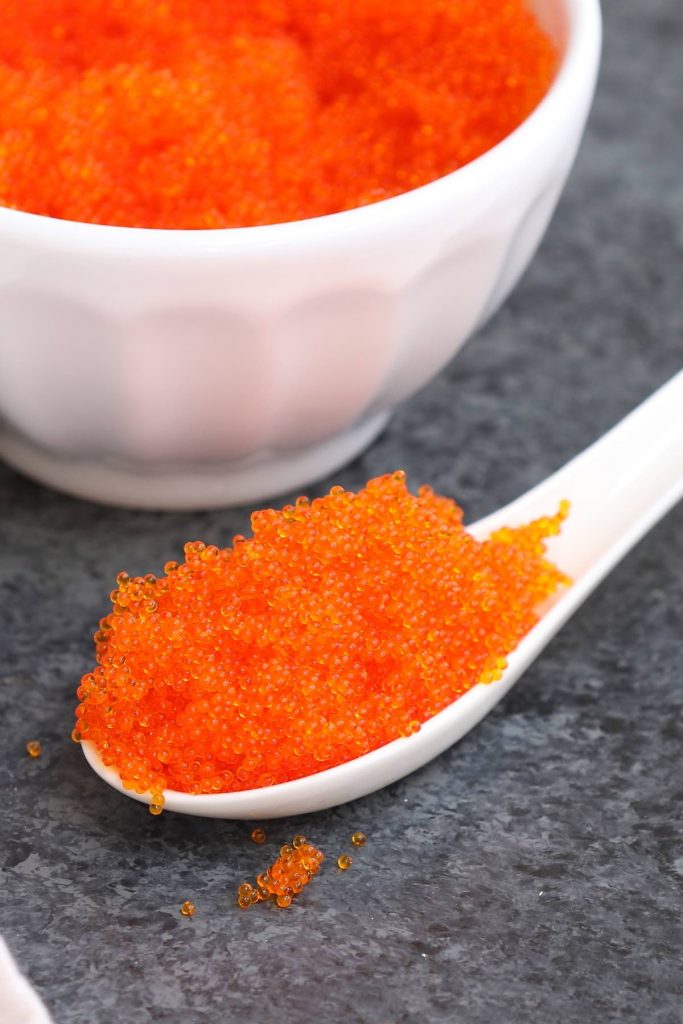
Types of tobiko and different colors
When infused with other ingredients, tobiko can take on its color and flavor:
- Black tobiko: with squid ink
- Red tobiko: with beet root
- Green tobiko: with wasaki
- Yellow tobiko: with yuzu, which is a Japanese citrus lemon.
Where to buy tobiko?
In the US, you can find tobiko at local Japanese or Asian grocery stores. Alternatively, you can order them online from amazon.
How to store tobiko?
Tobiko can be stored in the freezer for up to 3 months. When you need to use it, just use a spoon to take out the amount you need into a bowl, let it thaw and put the rest back into the freezer.

How to make tobiko sushi
- First fold the nori sheet in half to split it and place half of the nori on top of the bamboo mat.
- Spread cooked sushi rice evenly over nori and sprinkle sesame seeds on top of rice.
- Then flip everything so that rice is facing down. Place your favorite fillings on top of the nori.
- Start rolling using your bamboo mat and firmly keep the roll in place. Apply some pressure to tighten it up.
- Remove the bamboo mat, and add tobiko on top of your sushi roll. Place a piece of plastic wrap on top, and cover with the sushi mat. Squeeze gently to press the tobiko around the roll.
- Then remove the mat and keep the plastic wrap, then slice the roll into bite-size pieces. Remove the plastic wrap and enjoy!
Frequently asked questions:
Is tobiko raw?
Yes, tobiko is the flavored and colored raw eggs of the flying fish.
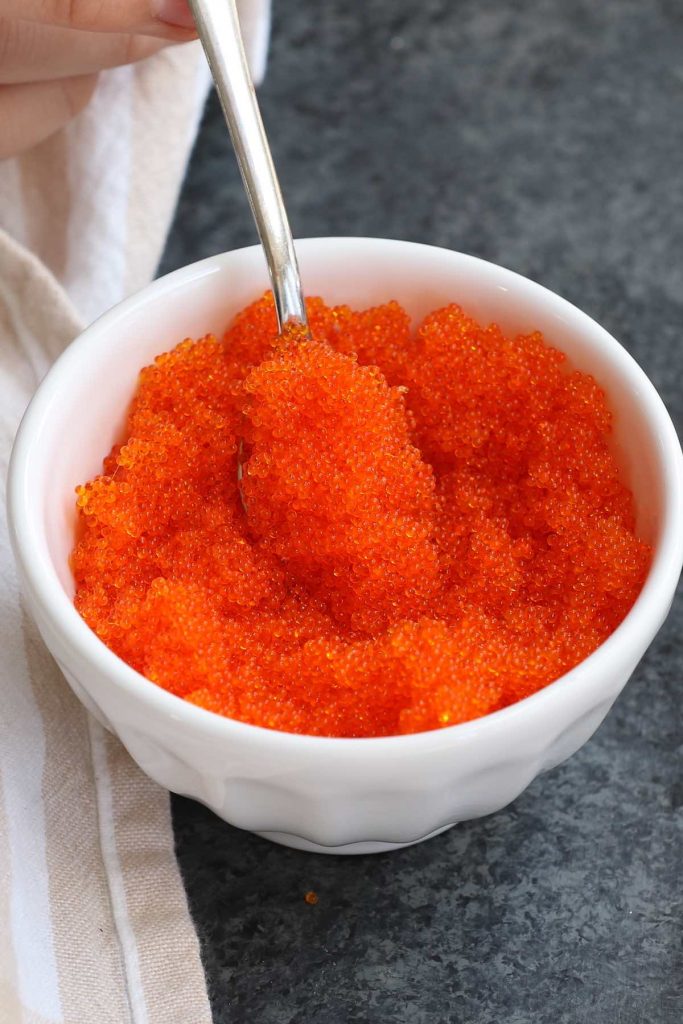
Is tobiko safe to eat?
Yes, tobiko is thoroughly pasteurized and it’s safe to eat. However, it should be eaten in moderation because of its high cholesterol content.
What’s the difference between tobiko and masago?
Both tobiko and masago are fish roe that are common in sushi rolls. Tobiko is flying fish roe while masago is egg of Capelin. Tobiko is larger, brighter with more flavor, as a result, it’s much more expensive than masago.
Some popular recipes using tobiko:
- Boston Roll
- Salmon Tobiko Bowls
- Tobiko Nigiri
More Japanese sushi rolls you may like:
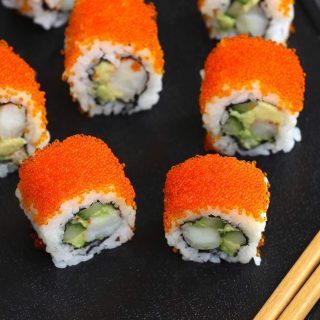
Tobiko Sushi Recipe
Ingredients
For Sushi Rice
- 1 cup sushi rice, short grain sushi rice
- 1 cup water
- 1 ½ tablespoons sushi vinegar (optional), or mixing 1 tablespoons rice vinegar, 1/2 tablespoon sugar, and 1/2 teaspoon salt
Instructions
- Cook Sushi Rice: Wash the rice and add it to the rice cooker together with water. Once cooked, transfer to a large bowl and let it cool down slightly. When it’s still very warm, stir in the optional sushi vinegar (or the mixture of rice vinegar and sugar).
- Make Tobiko Sushi: Lay out the bamboo mat with a piece of plastic wrap on top (this will make clean up easier and prevent rice from sticking to the bamboo).
- Fold the nori sheets in half and split them using a pair of scissors.
- Place half of the nori sheet on top of the bamboo.
- Take 3/4 cup of cooked rice and evenly spread over nori. (You can dip your hands in vinegar water to prevent sticking.)
- Flip everything so that rice is facing down.
- Place shrimp, avocado, and cucumber on top of the nori.
- Place the thumbs underneath the bamboo mat and lift the edge up and over the filling.
- Roll the bamboo mat away from you and apply some pressure to tighten it up. Keep rolling until the ends meet.
- Add Tobiko Topping: Remove the bamboo mat, and spread tobiko on top of the roll.
- Place plastic wrap on top, and cover with the sushi mat. Squeeze gently to press the tobiko around the roll.
- Remove the mat while keeping the plastic wrap. Slice the roll into bite-size pieces. Remove the plastic wrap from each piece. Serve and enjoy!
Nutrition
Nutrition information provided is an estimate only and will vary based on ingredient brands and cooking methods used.
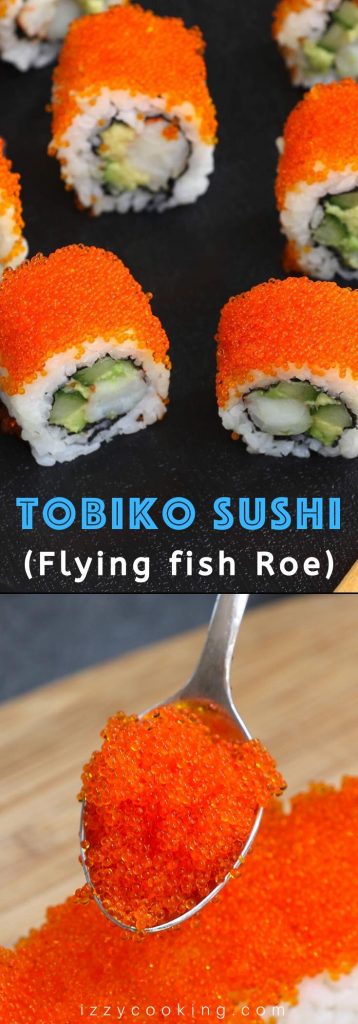
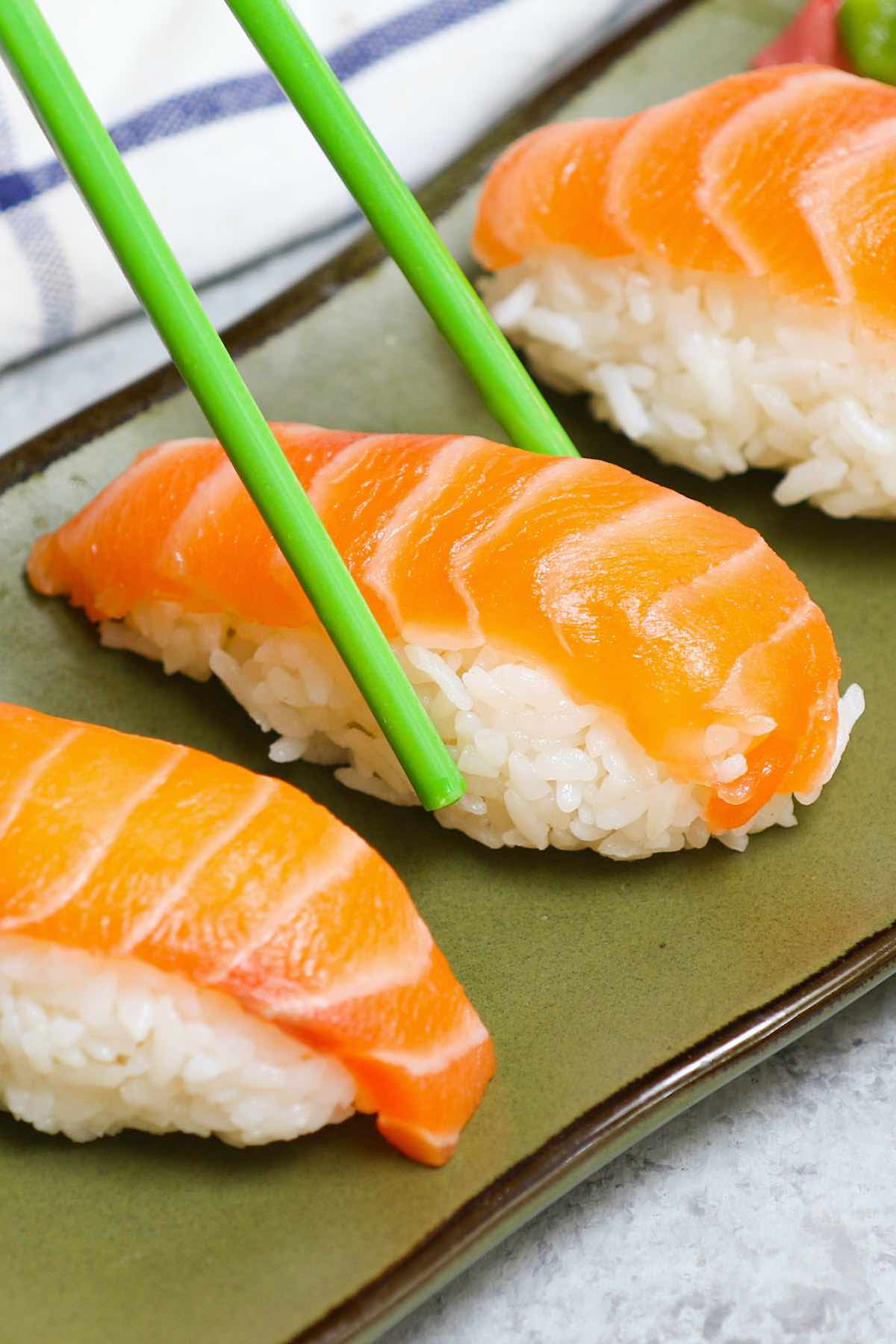
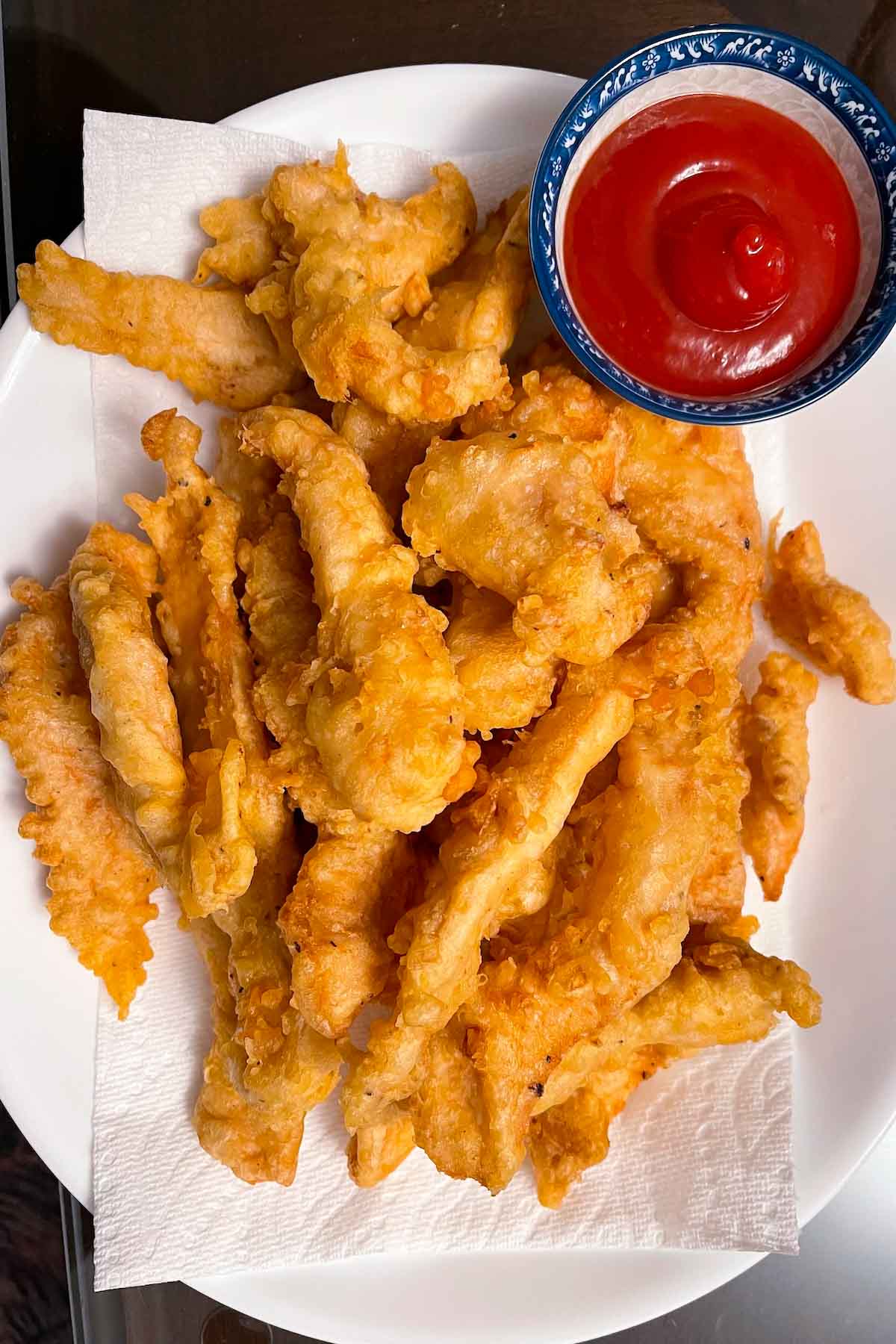
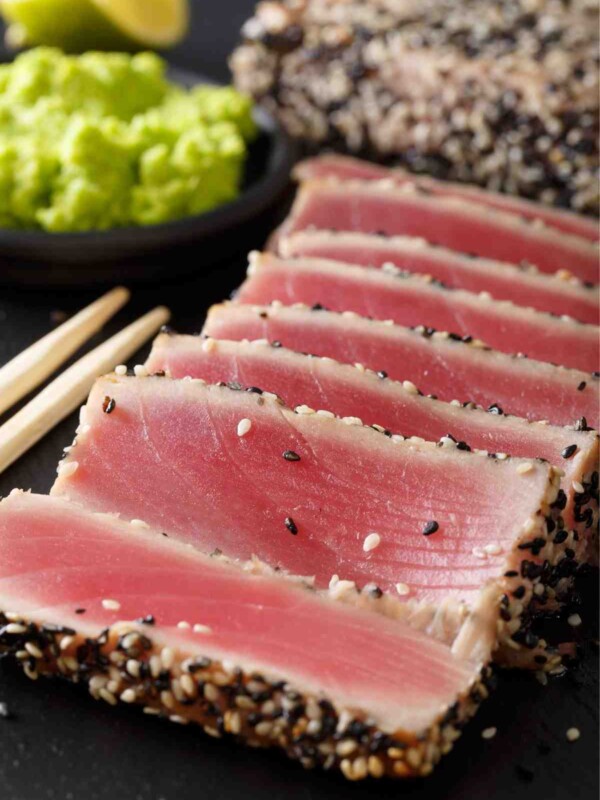
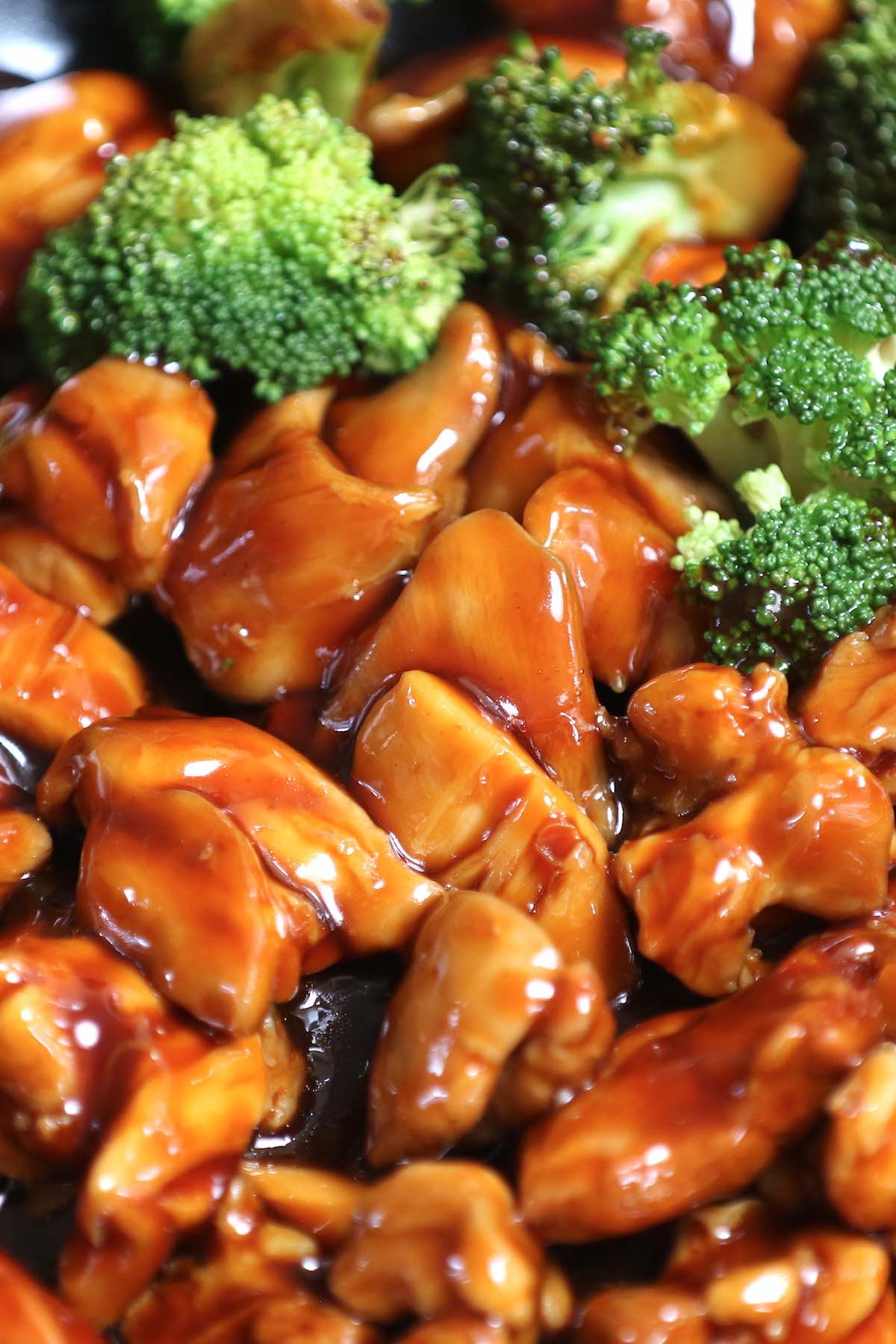
Thank you for all the great info! I love knowing more about the foods I love to eat!
I love tobiko on my sushi! We aren’t going out much right now, so I’m glad out have found a recipe I can make at home!
Glad to hear you like the recipe. Thanks Jessica!
Thank you so much for the recipe
Hi Nur, glad you like it. Thanks for letting me know.
From where I get tobiko in punr
Hi Amol, you can find tobiko at your local Japanese grocery store. It’s usually located in the freezer section. Alternatively, you can buy them online from Amazon.
It is amazing……I did it as a side dish with different sushi options for the family. LOVELY dinner
Hi Carmen, glad that you like the recipe. Thanks for letting me know.
Hi Izzy,
I’m pregnant and craving for sushi! Can’t eat raw fish so looking for other things with that seafood umami flavor to put into rolls. Your post says “Yes, tobiko is thoroughly pasteurized and it’s safe to eat.” and actually there are a bunch of other posts on the internet that say that same thing.
I wanted to ask:
(1) how do you know whether tobiko is pasteurized? I went to an Asian supermarket and looked at the packages of tobiko they had and none of them specifically mention pasteurization
(2) do you know how to pasteurize tobiko? so to be safe I can do it at home
Thank you very much!
Stacy